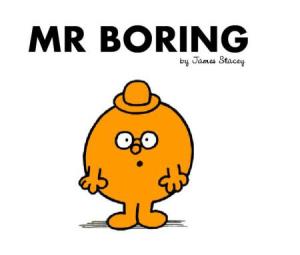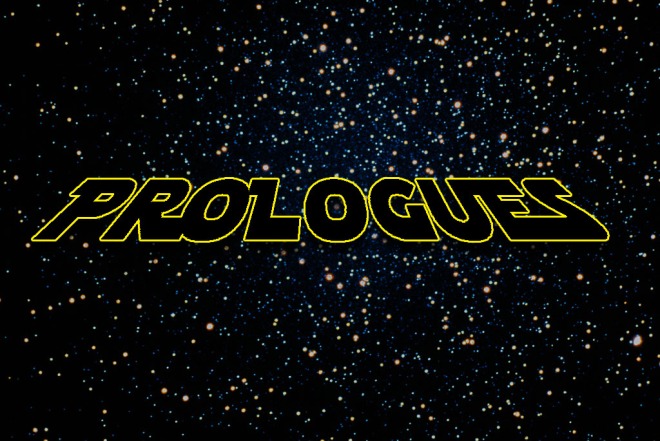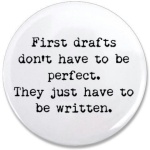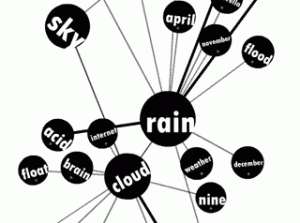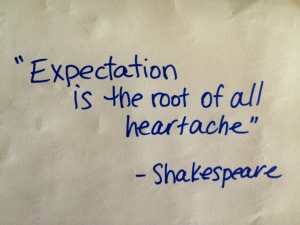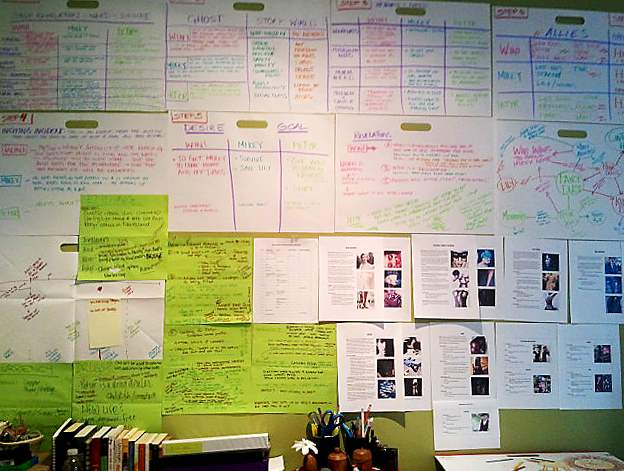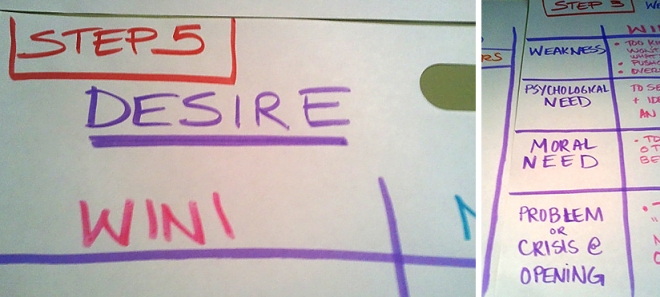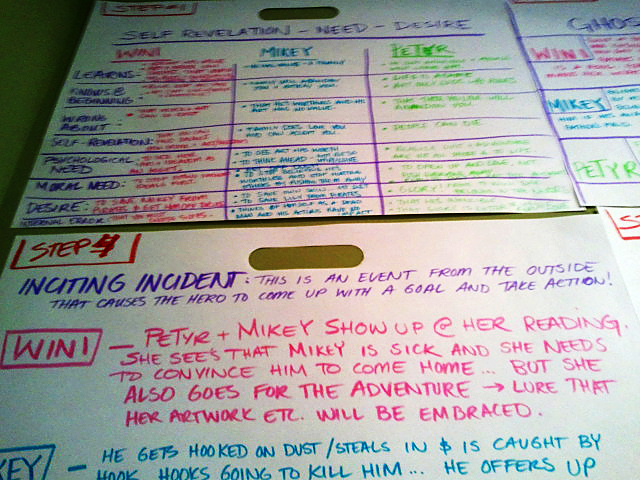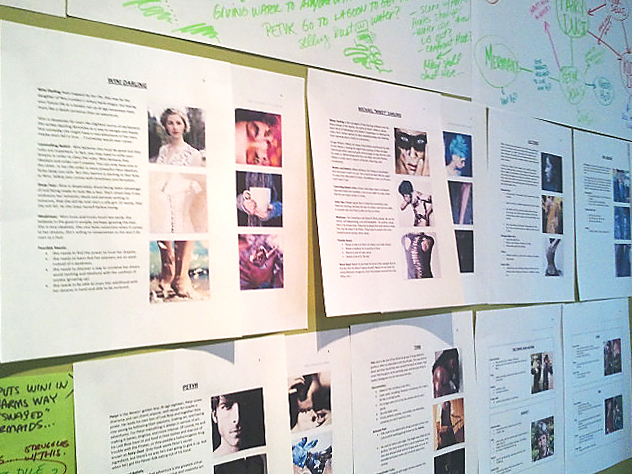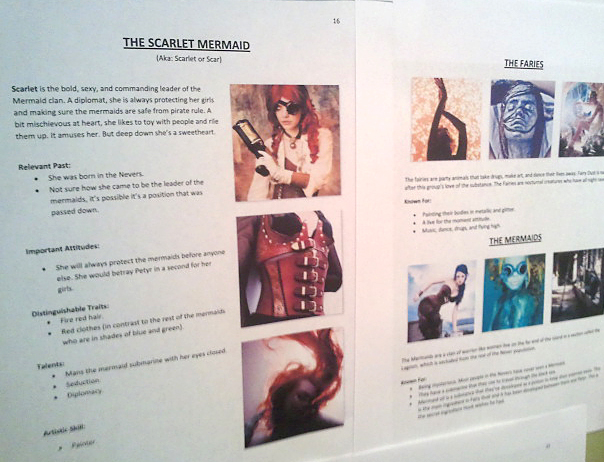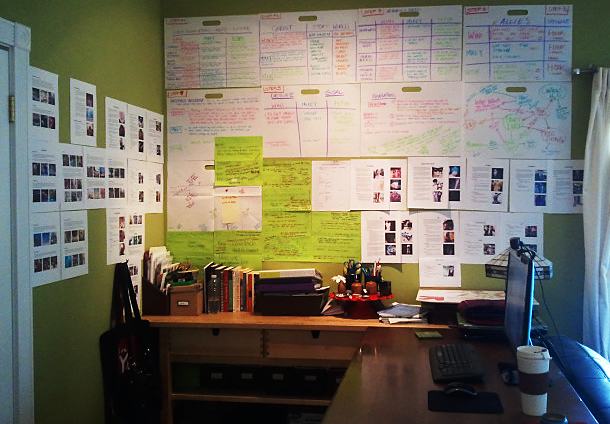Lately I’ve been having a hard time finishing books. Not because the writing is bad, or the stories don’t have developed characters, or even interesting plots. The problem is the stories don’t grip me and I’m not compelled to pick them up again to see what happens next.

With so many distractions in life – television, facebook, cooking classes – it’s easy to put a book down and stop reading. This is a reality we all must face. So, how do we keep our readers hooked? How do we make it impossible for them to put the story down?
Of course there are a lot of possible answers to that question, but the one I want to talk about today is The Gap.
The Gap is a concept coined by Robert McKee in his craft book STORY, wherein he argues that we read because we want to see characters presented with situations that “pry open a gap” in their lives. He describes the Gap as a moment in a character’s life when the world acts in a way that surprises them. It’s a revelation and/or situation in which the character’s landscape operates outside of what they knew was possible.
For example, a tornado headed straight for your character’s house is a gap in their life. Normal life has been interrupted by mother nature and now your character must act. But a gap can also be as small as the “cool kids” deciding to talk to your character at school. It’s any event that tilts your character’s landscape in a new way and presents your character with new opportunities and obstacles. At least, on the surface that’s what a Gap is.
But let’s talk about how to maximize the Gap and make your stories un-put-downable!
McKee describes the Gap this way:
 “The protagonist seeks an object of desire beyond his reach. Consciously or unconsciously he chooses to take a particular action, motivated by the thought or feeling that this act will cause the world to react in a way that will be a positive step toward achieving his desire. From his subjective POV the action he has chosen seems minimal, conservative, yet sufficient to effect the reaction he wants. But the moment he takes action, the objective realm of his inner life, personal relationships, or extra-personal world, or a combination of these, react in a way that’s more powerful or different than he expected … his action provokes forces of antagonism that open up the gap between his subjective expectation and the objective result, between what he thought would happen when he took his action and what in fact does happen … The gap is the point where the subjective and objective realms collide, the difference between anticipation and result, between the world as the character perceived it before acting and the truth he discovers in action.” (McKee, Story)
“The protagonist seeks an object of desire beyond his reach. Consciously or unconsciously he chooses to take a particular action, motivated by the thought or feeling that this act will cause the world to react in a way that will be a positive step toward achieving his desire. From his subjective POV the action he has chosen seems minimal, conservative, yet sufficient to effect the reaction he wants. But the moment he takes action, the objective realm of his inner life, personal relationships, or extra-personal world, or a combination of these, react in a way that’s more powerful or different than he expected … his action provokes forces of antagonism that open up the gap between his subjective expectation and the objective result, between what he thought would happen when he took his action and what in fact does happen … The gap is the point where the subjective and objective realms collide, the difference between anticipation and result, between the world as the character perceived it before acting and the truth he discovers in action.” (McKee, Story)
Creating a Gap for your characters isn’t as simple as throwing obstacles in the character’s way and hoping for drama. A compelling Gap will present your character with a situation that demands they make a difficult choice. This choice should be one that isn’t easy to run away from. I should “trap” your character and not allow them to return to their normal way of life. This is the space in which characters grow. It’s the space in which plot becomes so intoxicating your reader cannot put the book down.
Why? Because we want to see what choice the character will make. And, we want to see the consequences of their actions.
McKee goes on to say that:
“Once the gap in reality splits open, the character, being willful and having capacity, senses or realizes that he cannot get what he wants in a minimal, conservative way. He must gather himself and struggle through the gap to take a second action. This next action is something the character would not have wanted to do in the first case because it not only demands more willpower and forces him to dig more deeply into his human capacity, but most important the second action puts him at risk. He now stands to lose in order to gain.” (McKee, Story)
Okay, let’s look at an example to help illustrate this idea.
One of my favorite examples of a compelling Gap is in the reaping scene in The Hunger Games. As writers we have a lot of choices to make in our novels. Hunger Games author, Susan Collins, could have chosen to have Katniss’s name pulled out of the reaping basket. This would have presented a Gap in Katniss’s life. She would be presented with the choice of accepting the challenge of the games or running away and putting her family in danger. But Susan Collins makes the Gap even more intense and unimaginable for Katniss. Instead of pulling Katniss’s name from the reaping basket, her sister Primm’s name is pulled. Now the world has really opened up and torn a Gap in Katniss’s life. The world has truly acted in a way she did not see coming.

The Gap forces Katniss to choose between staying alive and watching her sister go off to die, or choosing to volunteer in her sister’s place and fight to the death. Neither decision is a good one. If you were forced to put the book down at that moment, before Katniss made her decision, don’t you think you would be itching to get back to reading? YES! Of course you want to see what choice she will make. This is the stuff of great drama!
 Another great example of Gaps is the movie Sunshine. This is a lesser known sci-fi film directed by Danny Boyle and written by Alex Garland. Every action, decision, and plot point in this movie has a consequence that forces the characters to face a new Gap. The film follows the crew of ICARUS 2, a spaceship flying toward Earth’s dying sun in hopes of “rebooting” it with a nuclear bomb. ICARUS 1 failed its mission in the past and ICARUS 2 is Earth’s last and final hope before the planet dies from lack of sunshine. The first gap in the film comes when ICARUS 2 receives a distress signal from ICARUS 1. The crew is now forced to make a choice. Do they alter their course to intercept ICARUS 1 and get a second “payload” bomb to help re-boot the sun, thus allowing them two chances for mission success, or do they stay on course and gamble that the one payload they have is enough? It’s not an easy decision. Both choices have consequences. As a reader we want to see what they will do!
Another great example of Gaps is the movie Sunshine. This is a lesser known sci-fi film directed by Danny Boyle and written by Alex Garland. Every action, decision, and plot point in this movie has a consequence that forces the characters to face a new Gap. The film follows the crew of ICARUS 2, a spaceship flying toward Earth’s dying sun in hopes of “rebooting” it with a nuclear bomb. ICARUS 1 failed its mission in the past and ICARUS 2 is Earth’s last and final hope before the planet dies from lack of sunshine. The first gap in the film comes when ICARUS 2 receives a distress signal from ICARUS 1. The crew is now forced to make a choice. Do they alter their course to intercept ICARUS 1 and get a second “payload” bomb to help re-boot the sun, thus allowing them two chances for mission success, or do they stay on course and gamble that the one payload they have is enough? It’s not an easy decision. Both choices have consequences. As a reader we want to see what they will do!
The brilliant thing about Sunshine is that each Gap has consequences that lead the characters to a second Gap, and then a third. In Sunshine these Gaps aren’t simple issues of survival. Instead these decisions force the characters to make choices that challenge what it means to be human, how far they are willing to go, and what is an appropriate sacrifice for the greater good. I love the film because it isn’t plot and action for the sake of plot and action. Every action opens a Gap in the character’s world and forces them to react in ways they never thought possible. (Note: I’ve been deliberately vague here, in case you want to watch this movie – which you should!)
I realize both of these examples come from high-stakes adventure stories. Let me give you an example of a Gap that isn’t “life or death” in nature:
 In Jandy Nelson’s young adult novel, The Sky Is Everywhere, teenage protagonist Lennie is dealing with the death of her older sister, Bailey. There’s a wonderful Gap when Lennie is hanging out with her sister’s boyfriend Toby. The two are chatting about Bailey, remembering her, and then they look at each other and — BAM! — Toby kisses Lennie. However, the gap comes in the moment when Lennie realizes she likes kissing her sister’s boyfriend! Suddenly the world has acted in a way outside of all that Lennie thought possible. And even more exciting, now she has to decide what she’s going to do about it.
In Jandy Nelson’s young adult novel, The Sky Is Everywhere, teenage protagonist Lennie is dealing with the death of her older sister, Bailey. There’s a wonderful Gap when Lennie is hanging out with her sister’s boyfriend Toby. The two are chatting about Bailey, remembering her, and then they look at each other and — BAM! — Toby kisses Lennie. However, the gap comes in the moment when Lennie realizes she likes kissing her sister’s boyfriend! Suddenly the world has acted in a way outside of all that Lennie thought possible. And even more exciting, now she has to decide what she’s going to do about it.
So, how can you apply the concept of The Gap to your work?
Ask yourself these questions about your book:
- Within the scope of your story, what Gaps have been presented in your protagonist’s life?
- How is your character challenged and incited to act by those Gaps?
- How has the Gap brought into question what your character believes, wants, and thinks is possible?
- What are the consequences of the choice your character makes when presented with a Gap? Does that choice move the story forward and take your character to the next Gap in the story? If not, does the Gap need to be changed so it challenges your character in stronger way?
- What does your character learn about herself as a result of the choices she makes when presented with those Gaps?
It’s one thing to throw obstacles, problems, and action at your character, but that doesn’t make the story compelling on its own. We often hear the phrase “torture your characters,” but that’s not what captures your reader’s attention. It’s the moral questions imbedded within the choices they must make that allows your reader to peek through the words on the page and see what makes us human. It’s those choices and the subsequent consequences that compel readers to picking the book up, again and again, to see what will happen next.
Want to learn more about The Gap?
Please Read:
- Story by Robert McKee, specifically pages 147 to 149.
- McKee also talks about the Gap on pages: 154-157, 177-180, 208, 270-271, 311-312, 362.
- These page numbers are based on the 1997, hardcover, It Books edition.
 Quite a few years ago, I started to look at the work of writing as a necessity. As a fact. I realized I had to accept that there will always be a ton of work: there will be revision, false starts, freewriting, and hundreds of pages that will never end up in the book. I’ve become very zen about the amount of work a novel demands. It’s an integral part of my process. I accept it. And I’ve never been scared of the amount of work to be done since.
Quite a few years ago, I started to look at the work of writing as a necessity. As a fact. I realized I had to accept that there will always be a ton of work: there will be revision, false starts, freewriting, and hundreds of pages that will never end up in the book. I’ve become very zen about the amount of work a novel demands. It’s an integral part of my process. I accept it. And I’ve never been scared of the amount of work to be done since. “Inherent in the idea of play being immature and frivolous is the idea that, just like business processes, all creative process should be efficient, timely, linear, organized and easily summarized. If it’s not clearly a means to an end, it must be a waste of time. In the worst creative writing books, this method is expressed in seven-point plot outlines and other easy shortcuts rather than exercises to help encourage the organic development of your own approach. This bind in codification sometimes reflects fear of the unpredictability of the imagination and the need to have a set of rules in place through which to understand the universe.” – Jeff Vandermeer (Wonderbook)
“Inherent in the idea of play being immature and frivolous is the idea that, just like business processes, all creative process should be efficient, timely, linear, organized and easily summarized. If it’s not clearly a means to an end, it must be a waste of time. In the worst creative writing books, this method is expressed in seven-point plot outlines and other easy shortcuts rather than exercises to help encourage the organic development of your own approach. This bind in codification sometimes reflects fear of the unpredictability of the imagination and the need to have a set of rules in place through which to understand the universe.” – Jeff Vandermeer (Wonderbook) What if we’re thinking about the work of writing all wrong? What if we need to switch the words “work” and “play”?
What if we’re thinking about the work of writing all wrong? What if we need to switch the words “work” and “play”?



